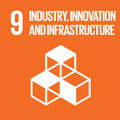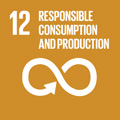- Docente: Sarah Bonvicini
- Credits: 9
- SSD: ING-IND/25
- Language: Italian
- Teaching Mode: In-person learning (entirely or partially)
- Campus: Bologna
-
Corso:
Second cycle degree programme (LM) in
Environmental Engineering (cod. 8894)
Also valid for Second cycle degree programme (LM) in Chemical and Process Engineering (cod. 8896)
-
from Sep 16, 2024 to Dec 20, 2024
Learning outcomes
The aim of the course is to give students the basic theoretical notions and the technical tools for:
- the identification of hazards;
- the evaluation of the consequences of accidents (through the consequence analysis and the damage models);
- the evaluation of their occurrence frequency (through reliability engineering);
- the assessment of risk measures as a combination of frequencies and consequences.
The knowledge of these issues is necessary to manage safety problems during the whole lifetime of a plant and also to assure compliance with the safety regulations of the process industries.
Course contents
REQUIREMENTS - PRIOR KNOWLEDGE
The course is offered during the last year of the master degree. This implies that it is in some way "recapitulatory" with respect to the whole study plan. In fact, the analysis of the safety aspects of the process industries and of their risk quantification requires an overall view of the features of these installations, and this view is usually gained only at the end of the studies (not during the studies, not at their beginning).
To fruitfully attend the classes and to fully understand the course contents and to pass the exam after sitting it for the first time, it is necessary to have a robuts knowledge of the fundamentals of termodynamics (specifically, of the mass and energy balances - even in presence of phase transitions and chemical reactions - and of the vapour-liquid equilibria), of fluidodynamics (specifically, of the Bernoulli equation and of the outflow of gas in choked conditions), of the transport phenomena (specifically, of the local balances of mass, energy, momentum), of Boolean algebra, and of the calculus of probabilities.
Classes are in Italian: to fruitfully attend classes, a good comprehension of Italian is necessary (at least a B2 level in Italian is required). For students not understanding Italian, it is possible to study the course contents on readings and bibliography fully in English (however, at least a B2 level in English is required).
COURSE CONTENS for a.y. 2024-2025
INTRODUCTION
The concept of risk. Classification of risks. Industrial risk. Risk of major accidents. The concept of safety and its context. Individual / local risk. Societal Risk. The steps of a quantified risk analysis study. Risk acceptability criteria. Risk reduction. Residual risk. The norms concerning the risk of major accidents in Europe and in Italy.
HAZARDOUS SUBSTANCES
Introduction. Hazardous properties of substances. A specific focus on flammability. A specific focus on toxicity. Classification of substances (introduction to the GHS system and the CLP regulation). The [Material] Safety Data Sheet. Labeling of substances. The REACH regulation.
HAZARD IDENTIFICATION
Introduction. Analysis of case histories. Checklists. Safety reviews. Index methods. HazId analysis. HazOp analysis. What-if analysis. FMEA and FMECA. Criteria for selecting the suitable tecnique for hazard identification.
DAMAGE MODELS
Introduction. Damage of fires, explosions, toxic clouds. Probit equations. Models based on threshold values. Threshold values proposed by the Italian law.
CONSEQUENCE ANALYSIS
Source models. Storage conditions in the process industries. Outflow of liquid: through a hole; through a hole in a tank; through a pipe. Basic notions about the outflow of vapour through a hole in a tank. Flashing liquids. Outflow of pressure liquefied gases. Pools.
Fires. Introduction. Poolfire. Jet-fire. Fireball. Flash-fire.
Dispersion. Classification of models. The dispersion of neutral gases (from a steady-state source; for an instantaneous source; form a punctual source; form a source with finite dimensions; the evaluation of the dispersion coefficients; concentration profiles; concentration contours; mass in the flammable range; plume rise models; puff passage time). Basic notion about the dispersion of heavy gases. Basic notions about transformation and removal phenomena.
Explosions. Introduction and classification. Unconfined vapour cloud explosions (UVCE). Physical explosions and BLEVEs.
Post-release event trees: for flammable liquids; for flammable pressure liquefied gases.
Software for consequence analysis.
RELIABILITY ENGINEERING
Introduction. Basic notions about probabilities. Reliability of components: non repairable components, repairable components, components periodically maintained. Systems reliability: the analysis of complex systems by means of fault trees.
THE CALCULATION OF RISK MEASURES
Risk recompisition. Example of calculation of individual and societal risk of a distillation column.
Readings/Bibliography
Reference books:
- Lees' Loss Prevention in the Process Industries, S. Mannan editor, IV ed., Butterworth-Heineman, Oxford, UK, 2012
- R.Rota, G. Nano, Introduzione alla affidabilità e sicurezza nell'industria di processo, Bonomo Ed., Bologna, I, 2024
- D.A.Crowl, J.F.Louvar, Chemical process safety: fundamentals with applications, IV ed., Pearson Education, USA, 2020
- Centre for Chemical Process Safety of AIChE, Guidelines for chemical process quantitative risk analysis (II ed.), New York, USA, 1999
- Center for Chemical Process Safety of AIChE, Guidelines for hazard evaluation procedures (III ed.), AIChE, New York, USA, 2008
- TNO, Methods for the calculation of physical effects (Yellow book). Report CPR 14E (III ed.), The Hague, NL, 2005
- H. Kumamoto, E. Henley, Probabilistic Risk Assessment and Management for Engineers and Scientists, 2nd edition, IEEE Press, New York, 2000
You can find all these books (in some cases in one of the previous editions) at the Library F.P.Foraboschi in via Terracini 28; for information about the availability of the books, please contact the librarian (Annalisa Neri, annalisa.neri@unibo.it)
Teaching methods
- Notes personally taken during the classes
- Material available on the e-learning platform of the University of Bologna (Virtuale) (the access is limited to the students having the couurse in their study plan for a.y. 2024/2025 or for one of the previous years)
- Copy of the slides explained during the classes
- Supplementary readings
- Exercizes and quizzes for each topic
- An example of the written exam text
- Audio / video files on specific topics
- Specic software toolsThe teacher does NOT make available the video recordings of the classes. The warm reccomandation to students is to follow personally all the classes, taking notes directly on the slides explained by the teacher (made available before the classes) and revising them after each class. It is aboslutely to avoid sitting part of exams or entire exams when there are classes or just after the end of the classes, if this requires to suspend attending the classes of other courses.
Assessment methods
The exam has the aim to verify that the student has achieved the following goals:
- knowledge of the risk indexes adopted for the quantification of the risk of major accidents and of the methodological approach for their estimate;
- knowledge of the most important techniques for hazard identification;
- knowledge of the different kinds of accidental scenarios arising form a loss of containment of flammable and/or toxic fluids;
- knowledge of the consequence analysis models for the evaluation of the consequences of accidental scenarios and of the reliability engineering models for the estimate of their occurrence frequency.
The exam consists in a written test followed by an oral test (to be sit one after the other, typically on the same day or, if not possible, on consecutive days). To sit the oral test, a positive mark in the written test is necessary. In case the oral test is not positive, it is necessary to sit again also the written test. The written test consists of questions about theory and simple numerical exercises related to the course contents. "Simple" means that neither the use of a PC is necessary, nor it is necessary to retrieve data about the chemical, physical and hazardous properties of the substances, nor to perform difficult conversions of unit measures. Students should refer, as an example, to the exercises explained by the teacher during the classes and to the example of exam proof made available in the teaching material.
In the unfortunate case that exams are online, the teacher will consider the possibility to introduce changes to the assessment methods. These changes will be valid for students sitting the exam online and for those sitting it in the classroom, so to avoid differences in the exam due to the mode the exam is taken.
To obtain a passing grade, students are required to at least demonstrate a knowledge of the key concepts of hazardous substances, of the indexes to express the risk of major accidents, of the successive steps of the risk analysis methodology and of their connections, of the main mathematical models of each step and of the meaning and unit measures of the most important parameters of these models, also being able to solve simple exercises. Higher grades will be awarded to students who demonstrate an organic understanding of the subject and a high ability for critical application, a clear presentation of all the course contents and the ability to face more complex problems related to safety aspects and risk quantification, applying in an appropriate manner the expertise aquired in the whole duration of the studies. A failing grade will be awarded if the student shows knowledge gaps or superficial knowledge of several topics, confusion in distinguishig the accidental scenarios one from the other, poor knowledge of the key-concepts of relialibility engineering. Penalties will be given to those students who are not able to retrieve information about the course there where this information is made avalable (web pages of the teacher and of the course, Virtuale platform, copy of the slides expalined during the first classes) and to those writing unnecessary emails to the teacher to get the information about the course reported elsewhere.
Six exam dates per year are fixed and published on AlmaEsami.
To avoid disapponting the teacher, it is strictly forbidden to sit the the exam just for trying to pass it. In fact, students have to sit the exam only when their preparation has reached a sufficient level. Since there are lots of exercizes and quizzes (both on theory and on exercizes) available on Virtuale, each student can verify by himself / herself if his / her preparation is sufficient, being able to solve the exercizes and to answer the questions on Virtuale accurately and quickly.
More information about the AfSIP M exam is reported in the regulation for sitting the AfSIP M exam and in the introduction to the AfSIP M course, both available on Virtuale.
For all those issues cocerning the exam not explicitely mentioned in this webpage of the AfSIP M course and in AfSIP M exam regulation available on Virtuale, the indications of the Teaching Regulation (regolamento didattico) of UniBO are valid.
Teaching tools
- Lessons performed with the aid of power point presentations
- Watching of videos
- Highlights about specific software tools
- Numerical exercises
Office hours
See the website of Sarah Bonvicini
SDGs




This teaching activity contributes to the achievement of the Sustainable Development Goals of the UN 2030 Agenda.
